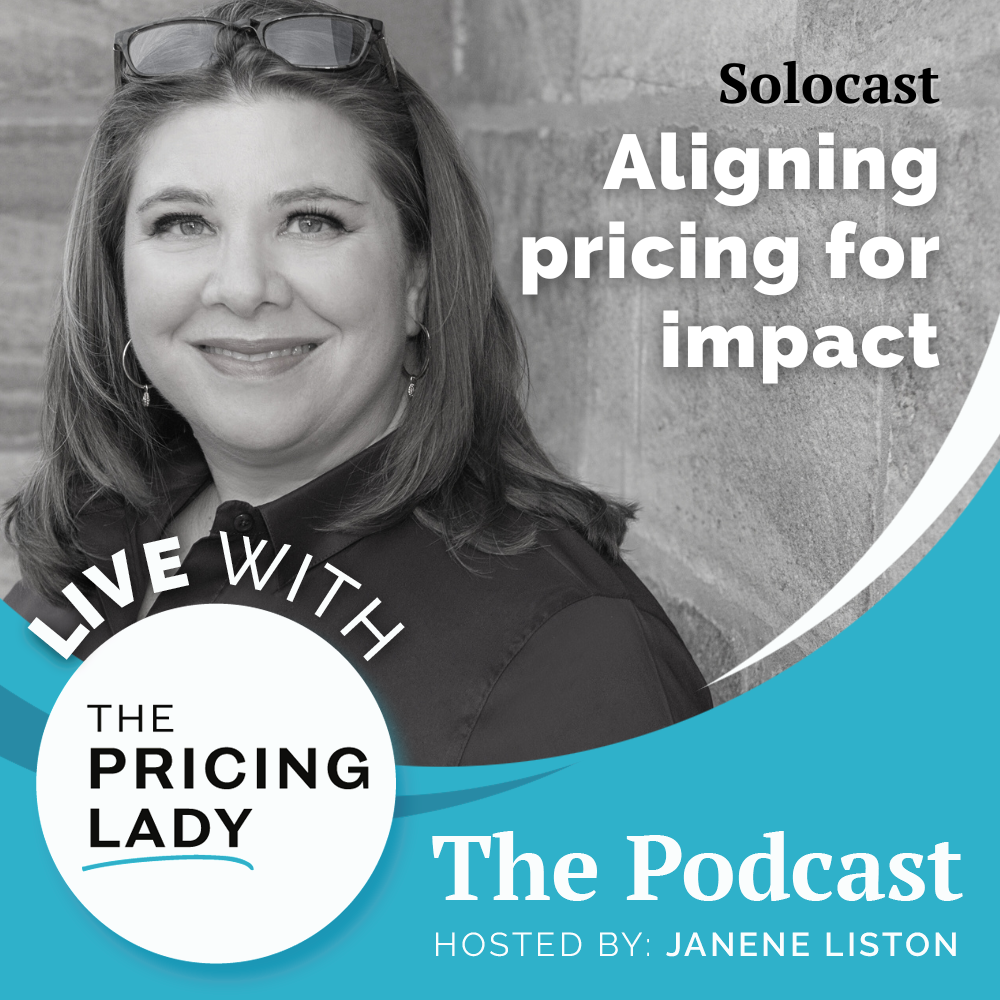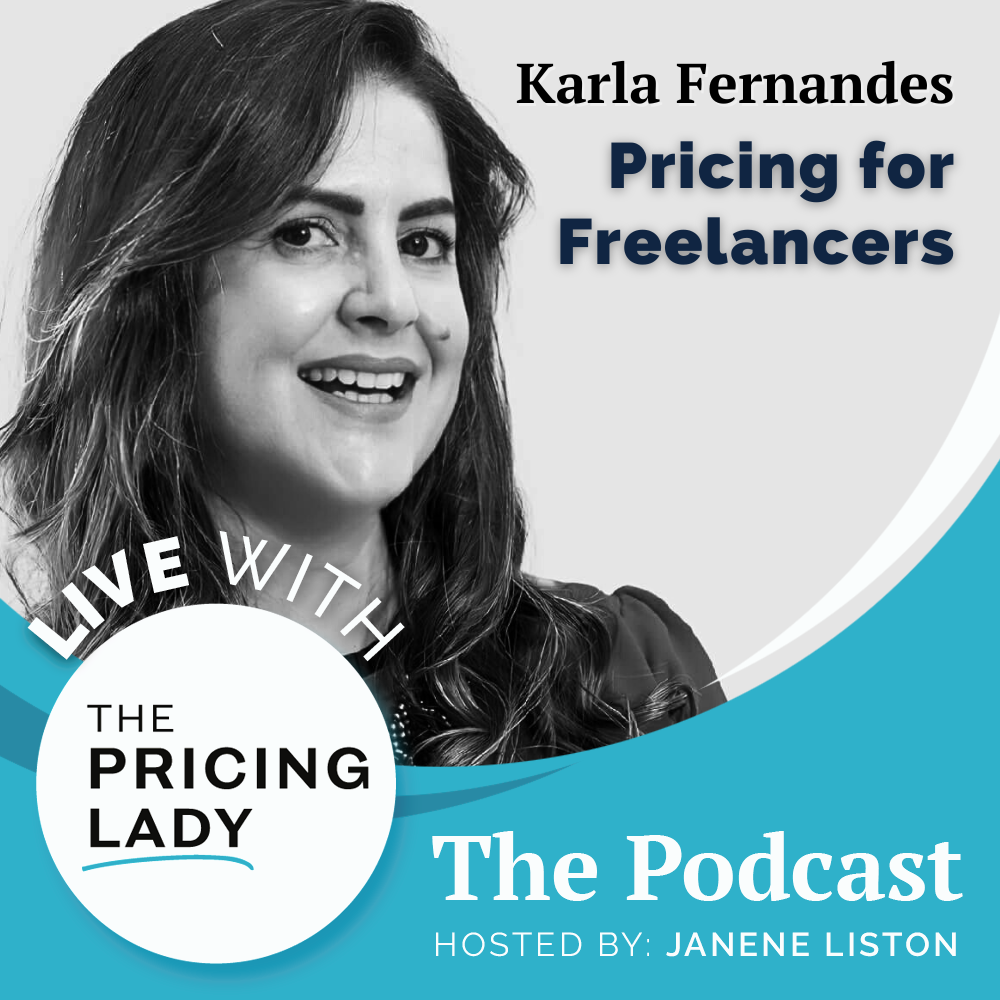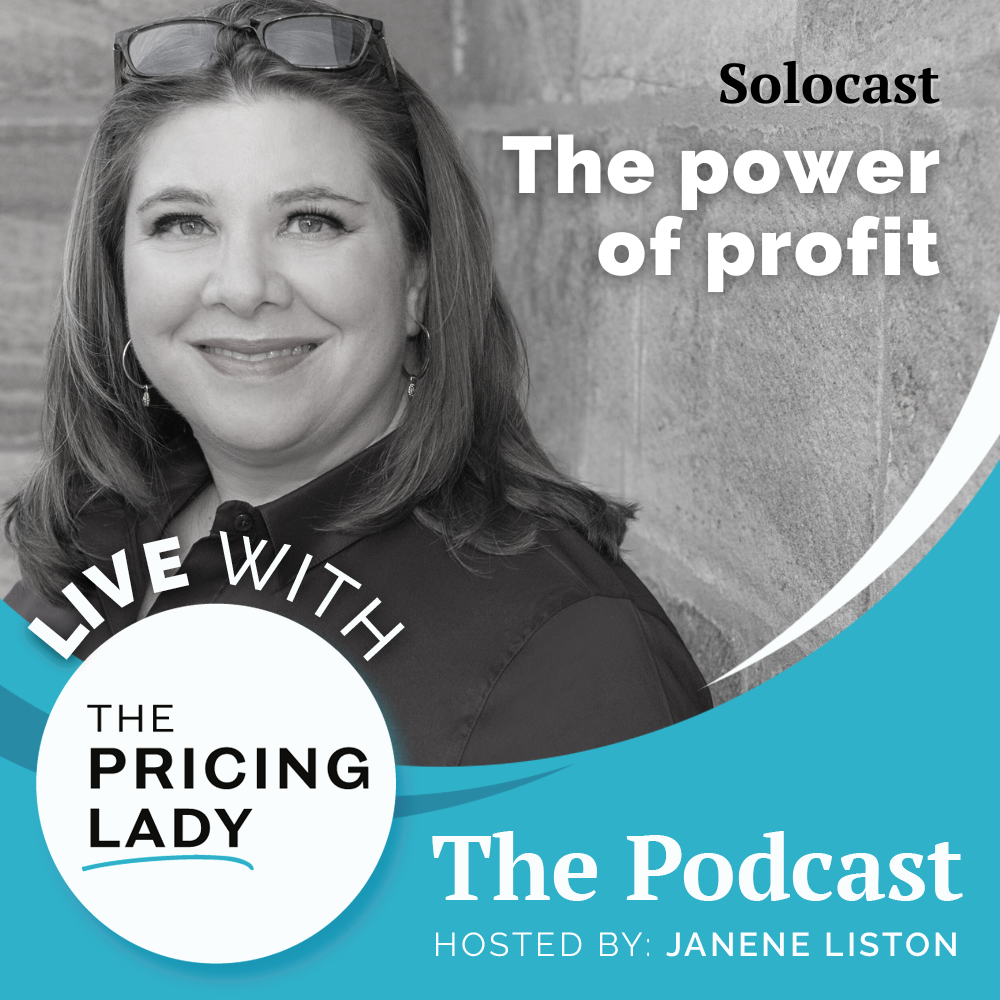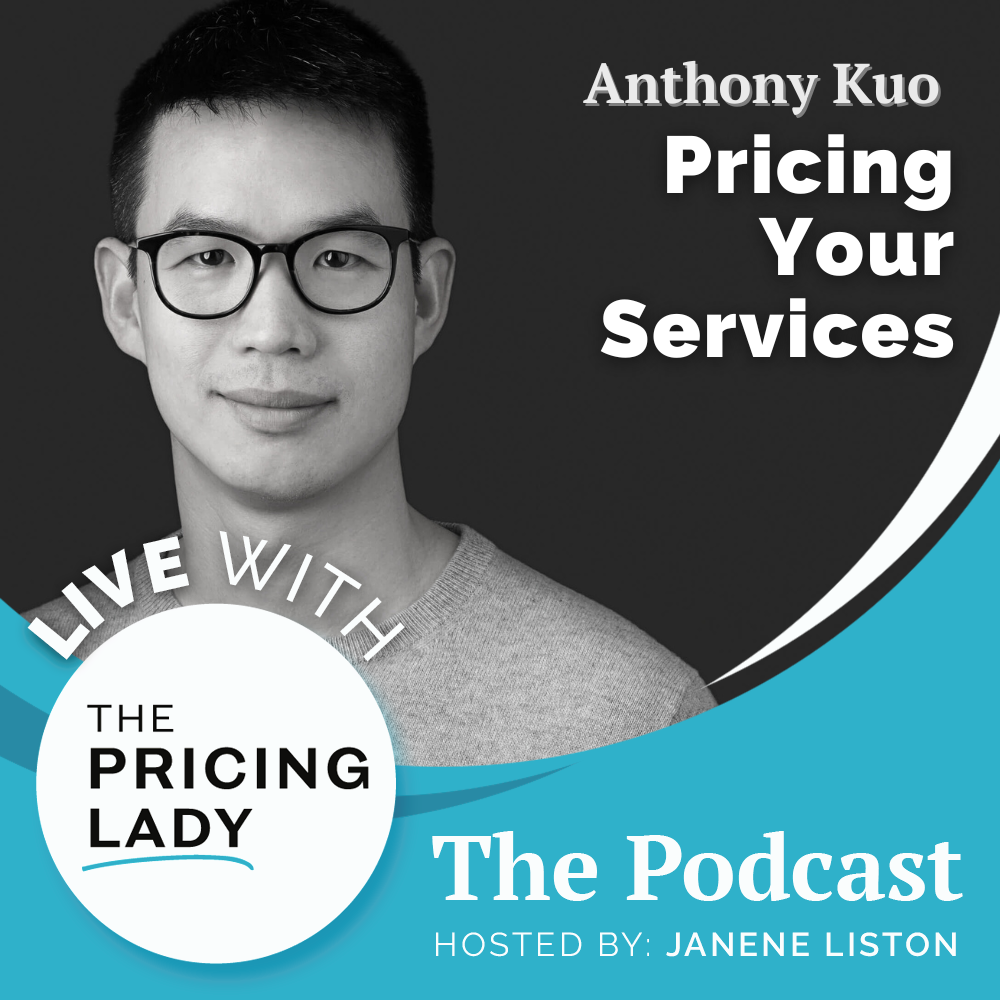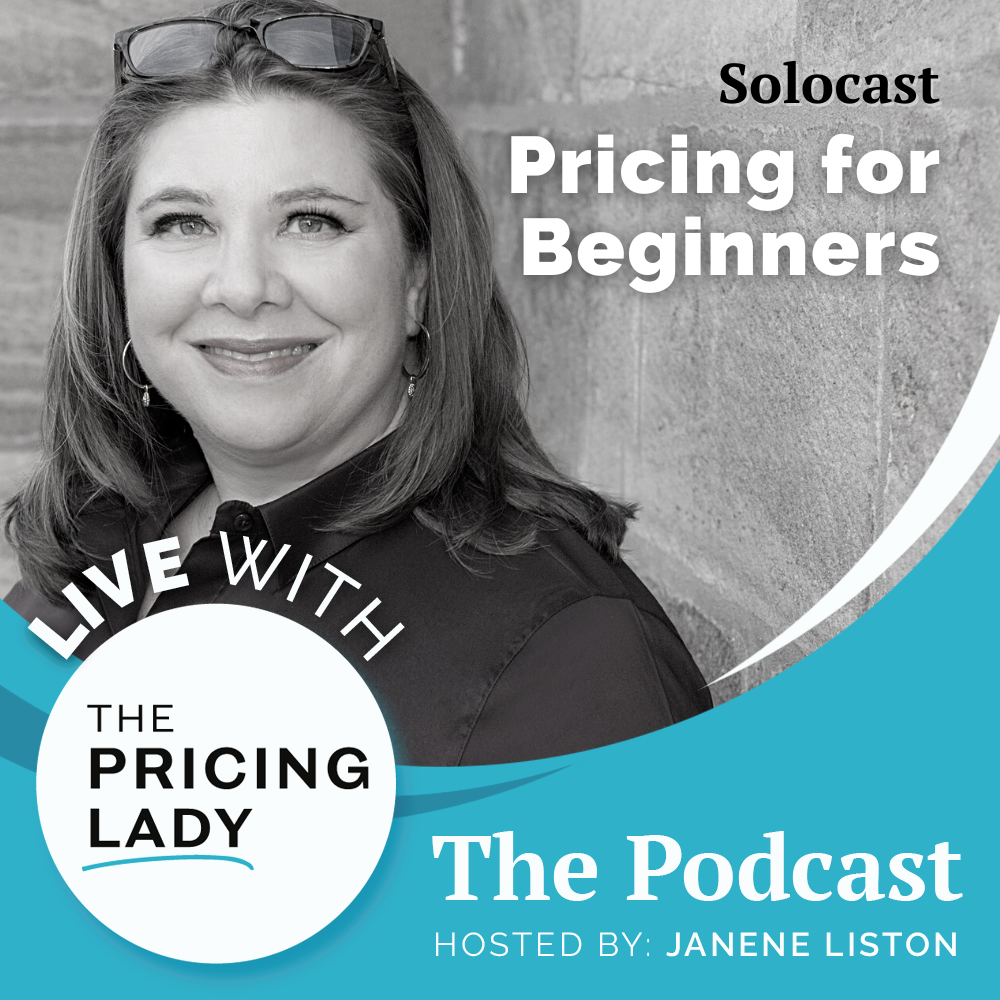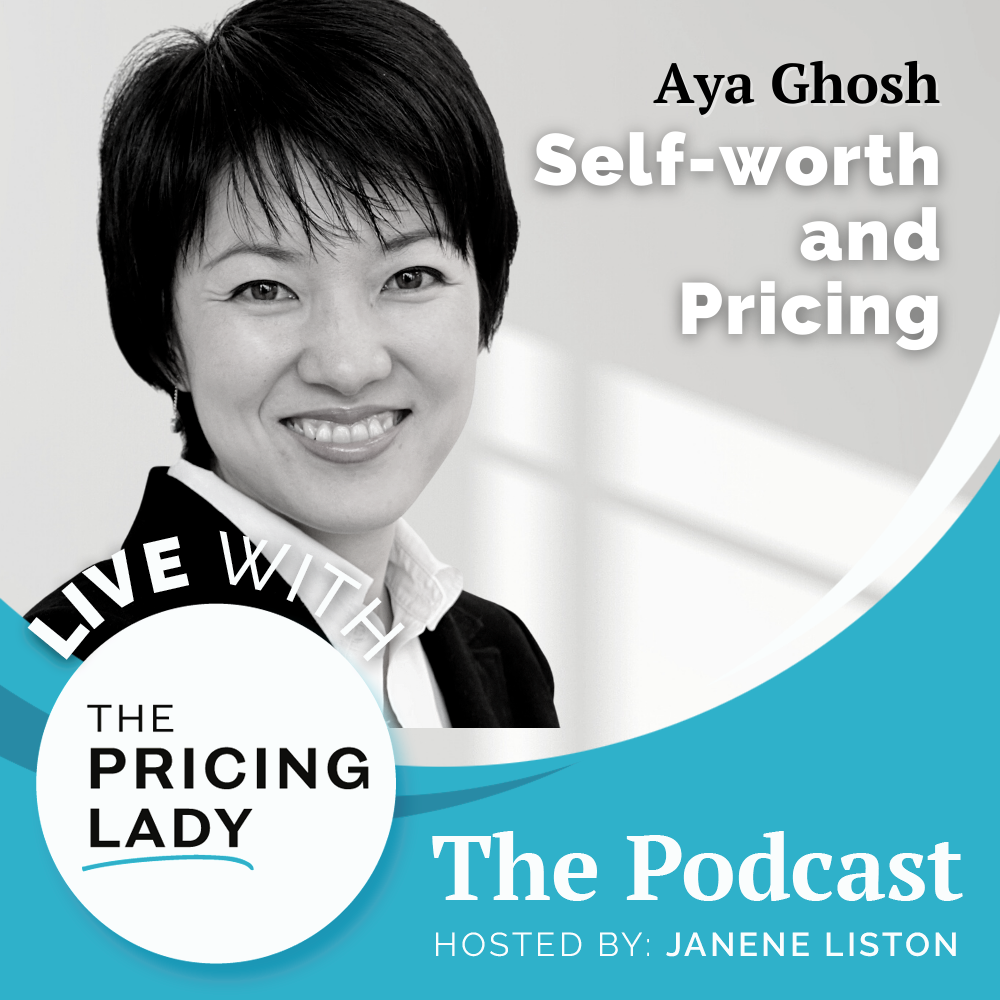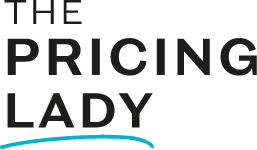Pricing is a much undervalued business topic. It has a bigger impact on your profit than anything else in your business – yet if you’re like most people you don’t often give it much attention. Studies show time and again that of the four profit levers (price, volume, fixed costs and variable costs), price has the most impact on profit. Yes a bigger impact than your costs. This surprises most people. And it’s counter to how they are working.
Consider for a moment what most businesses do when profits start falling? That’s right they start reducing costs. But if you understood that your prices have a bigger influence on your profit wouldn’t you also give your at least the same attention you do costs?
Of course you would, put that why it’d be silly not to. Logically it makes sense but that’s not what you’re doing.
And if you’re a new business, failing to give pricing your time and energy will make it harder for you to get your business engine running (i.e. build profitability) and achieve your business objectives. t also makes it hard for you to tell the “Profit Story” of your business to investors, potential business partners and other interested in working with you.
The good thing is that most pricing mistakes are avoidable. But first you’ve got to know what to do to not repeat the mistakes your making or the ones you haven’t even thought of yet.
In This Episode
In this episode I’ll share with you 5 of my expert pricing tips to help you avoid the most common pricing mistakes. Let’s take you from pricing woes to pricing like a pro! We’ll first look at 5 of the most common pricing mistakes and then I’ll share with you actions you can take to lessen the chance of you making those errors.
Podcast Episode Highlights
- 0:00 Intro
- 2:17 Mistakes Number One to Five
- 5:39 The Leaky Bucket Concept
- 8:03 Tips to Avoid Pricing Mistakes
- 17:30 Not a Right Strategy
- 25:18 Wrapping it Up
Favorite Quotes
“There are many reasons why people offer unnecessary discounts – mostly they’re fear based. Try to avoid making fear based decisions in your business because you know it won’t help you in the end.” Janene
“Pricing is there to help you achieve your business goals. You need to make sure it’s aligned with your goals, your objectives and it’s aligned with all other aspects of your business.” Janene
“Customer interviews are so important because they help you get into the head of the customer. We think we know what they want. We think we know what they need, but we need to take what we think we know and we need to, combine this with what they tell us they need or what they tell us they want..” Janene
“Offering a discount out of fear is rarely the right strategy for your business.” Janene

“People don’t actually understand how much more volume they need in order to be more profitable. If they did, they would see in most cases, it would be very difficult to be able to pick up that much volume.” Janene
“It’s sometimes just putting into perspective and asking ourselves, how much do we value a service, a regular service you take? And what would we like our customers to value our service like?” Janene
Episode Links
How to do Customer Insight Interviews: https://thepricinglady.com/betheexpert/
How to set Prices group program The Fair Price Formula:https://maven.com/the-pricing-lady/fairpriceformula
Rate, Review and Follow the Show on Apple Podcasts
“I’ve just found my Pricing Resource!” … “A binge worthy podcast.” … “I learned so much about how to improve my profitability.”
If that sounds like you, please consider rating and reviewing the pricing podcast. It helps me spread the word to more people and ultimately get more small businesses on the path to sustainable profitability and business success. Click right here, tap to rate with five stars, then select “Write a Review.” Last let me know what you loved most about the episode!
If you don’t already, follow my pricing podcast. New episodes come out every couple of weeks, plus bonus episode. If you’re not following there’s a good chance you’ll miss something. And last, listen to more episodes there are more than 130 episodes to choose from from setting prices to executing them to changing them you’ll find answers to many of your pricing questions.
Reach Out, Connect and Book a Call with Janene
Linkedin | YouTube | Facebook | Email List
Get started improving your business. Beyond this pricing podcast there’s more for you to explore. Sometimes it’s difficult to know where to begin. I suggest you Download the the self assessment Pricing Scorecard to get a view of what’s working and not in your business. Also if you’ve ever wondered “What’s a fair price?” then check out my on-demand webinar “Getting to A Fair Price”. Two great places to get started with pricing in your business today.
Get in touch with Janene, your Business Strategist & Pricing Expert. If you’ve got a business question that needs answering, a pricing challenge you’re facing or you have suggestions for future topics or guests, let me know. Your questions and insights often become episodes. Share yours with me and let’s see where it goes. Contact Janene.
Listen up! Don’t miss out. There’s a lot going on and you’ll want to be in the know. Follow my YouTube channel (rate it too please) so you don’t miss an episode of Live with The Pricing Lady or join my Email List.
Transform your business and life. My mission is to help you build a sustainably profitable business. One where you can confidently charge for the value you deliver. Curious about my coaching and consulting offers, check them out. Let’s see how we can work together. Book a complimentary Call today!
Episode Transcript
Janene: Today, we’re going to be looking at five tips to avoid the top five pricing mistakes. Let’s take a quick look at what those mistakes are.
Mistake number one is you have the wrong price positioning. This is usually underpricing. It can also be overpricing, but most people who come to my door to get help from me are underpricing themselves.
There are many reasons for this. Sometimes it’s because they fear repercussions from clients and customers; Sometimes it’s because they don’t feel worthy. Sometimes it’s simply because they don’t understand how to set prices. And oftentimes it’s because they think the lowest price is the one that always wins.
That is a myth, if you have it in your head, you need to get rid of. Rarely does the lowest price ever win.
Second pricing mistake, ignoring the customer. This is a biggie, if you follow me, you know what I’m about to say, that is pricing is rooted in a deep understanding of the customer.
If you ignore the customer when it comes to setting your prices, then you are going to fall in the category above of under /over pricing. You need to understand the customer. It is critical to finding the best prices.
Next, unnecessary discounting. I’m going to share with you a moment, something about a leaky bucket that will help you understand why the price positioning and the discounting are so important to your business and why getting them wrong in your business is really going to affect your bottom line.
There are a multitude of reasons why people offer unnecessary discounts. Most of them are fear-based. We should try and avoid making fear-based decisions in our businesses because we know that they are in the end not going to help us.
Is Pricing Aligned with Your Goals?
Pricing mistake number four. You don’t have a real pricing strategy.
Pricing is there to help you achieve your business goals. You need to make sure it’s aligned with your goals, your objectives and it’s aligned with all other aspects of your business because if it’s not, then your pricing may be working against you achieving those goals. Yes, I have absolutely seen that where people’s pricing strategy was at complete odds, with what they wanted to achieve in their business, and it was keeping them from getting there.
If you don’t have a strategy that’s aligned with the rest of the business, or you don’t have a strategy at all, then you’re just guessing.
Mistake number five is waiting too long to make price changes.
This is another fear-based pricing mistake. People are afraid to raise their prices, even when they know they should. They convince themselves that if they do that, it’s going to destroy everything. Very seldom does that happen. Usually When you make a price increase, and it has a negative impact it’s because you didn’t really understand how to go about implementing and executing that price change.
Yes, you can increase prices, but you must be able to do it in the right way in order to make the changes stick and not upset the market. Does that mean you shouldn’t do it? Absolutely not. If you need to make price changes, it’s because you’re not profitable enough anymore, or you see that you won’t be soon enough because some changes that are coming your way.
It’s very important that when you recognize a change needs to be made, that you figure out. When you’re going to do that sooner rather than later, hopefully, and how you’re going to execute that.
The Leaky Bucket Concept
Those are the five pricing mistakes I see most often from people like you. Let’s look at the tips that I have to help you avoid some of these mistakes.
Before I get into that, I said I was going to share with you a few words about the Leaky Bucket. The Leaky Bucket is a concept that helps you to understand that there are two sides of pricing that you really need to manage. If you think of a bucket that you’re trying to fill with water, your business is similar.
It’s like a bucket you’re trying to fill with profits. Your price positioning is similar to the tap on the water. If you turn the tap on to fill that bucket with water and there’s not much water pressure, then very little water comes into your bucket, right? It may drip and dribble in, but you don’t have a real strong, good flow of water coming in.
Well, it’s the same when your pricing isn’t good, when you’re over or under priced. For example, then fewer people will choose to buy from you and therefore you will get less money or if you’re severely underpriced, then maybe many people will buy from you, but you still won’t make enough money because you can never have enough volume to actually make up for that.
Price positioning is like the tap on your business. If you’re positioned well, then you’re going to have good “water pressure” or profit pressure flowing into that bucket. You’re going to be putting some profits in that bucket, but there is the other side of this leaky bucket concept and that is the holes in your bucket.
Poking Big Old Holes
Every time you are offering unnecessary discounts, it’s like poking big old holes in your bucket and letting those profits fall out the backside. You can see on the one hand; you need to manage that positioning. And on the other hand, you need to make sure you’re not putting holes in your bucket that are going to leak profits out.
And there’s lots of different ways to discount unnecessarily. Like if you were to offer a client, okay, you don’t have to pay for six months, then you’re behaving like a bank and that costs you interest, unless you’re charging them the interest, right? For that banking service, if you will. There are lots of different ways to leak money, from your bucket, when it comes to your pricing.
And you need to be aware of both the positioning. And how you’re going to execute in terms of where you’re granting discounts or where you’re leaking money out, the backside in terms of profit.
Now let’s look at those five tips to help you avoid that, to avoid those pricing mistakes that is.
Are you doing Customer Interviews?
First, please do your customer research. I’m going to be even more precise here and I’m going to say, make sure you do customer interviews. Customer interviews are so important because they help you get into the head of the customer. We think we know what they want. We think we know what they need, but we need to take what we think we know, and we need to, combine this with what they tell us they need or what they tell us they want.
Sometimes they don’t always know as much as we do because we’re coming from a place of deep knowledge in a certain topic. My clients are not sitting at home in bed at night saying, boy, I wish I had a better pricing strategy. No, they say, I’m struggling. I don’t feel confident about my prices, I wish I did so that I didn’t get so nervous every time I had to say it.
It’s different. If they felt more confident because they understood their customers better, and they knew how to set prices, then they would be saying something. They would sleep more soundly. Doing customer interviews is critical. If you are a new or a young business, please do these because at that stage of your business, you’re making so many assumptions and it is the best way to test out those assumptions is by doing what I call customer insight interviews.
I do have a self-paced course for that, and I run a challenge once or twice a year. I’ll stick that in the show notes for you. Please do them because failing to do that, simply ignoring the customer when it comes to setting your prices is one of the biggest mistakes that I see.
Setting Prices
Second tip, understand how to set prices. What most of you know from pricing is mostly from being a consumer. For most businesses, unless you’re in retail, for most businesses, if you take the strategies and tactics in pricing that are used in the retail industry and apply them to your business, it will not be effective.
Yeah, you are not trying to shift inventory every season in your business, most likely again, if you’re retail, this may be not, this may not apply to you if you are not a retail business and you are not trying to shift inventory every season, then you wouldn’t want to take this strategies and tactics that they use in the retail industry and apply them to your business.
And if you’re a small business, you really don’t want to do that because that can really put you in a difficult profit situation, or even in the situation where you really never get enough profit to actually have your business engine, if you will, running. When you understand how to set prices, it’s much easier to set prices you feel confident about.
Most people are just kind of guessing. They use what I call pin the tail on the donkey pricing, which is just kind of cover your eyes and throw a dart at it or see the spaghetti method. throw a wet spaghetti at the wall and see what sticks. That is not going to help you feel confident.
You want to understand why that price and not another price. When you understand how to set the prices, then you will understand why you’re charging this price and not that price. That gives you a different level of confidence in your pricing, but also in yourself and in your business.
Business Purpose
Third tip, every discount should have a clearly defined business purpose. There are way too many unnecessary discounts out there. I had a client a few years back, we were working together and we were about done with our work and then she sent me this list and I took a look at the list and I was very Puzzled by it.
And I gave her a call and I said, okay, explain to me what this is. She goes, well, this is the list of all the special offers and discounts I’m going to make in the year. It confirmed what I thought it was. And I said, okay, what’s the purpose of this first one? And she said, well, I forget what it was.
Let’s just say it was Valentine’s day. For Valentine’s day, I thought it’d be nice to offer, a discount, a special, make a special offer. I said, okay, so what’s the purpose of that? She didn’t really understand how to answer the question, which is typical because there was no business purpose for it.
It was just a special promotion. Now, company who understands and is doing pricing effectively, they may choose to offer a Valentine’s day special offer, but the idea for them is that they’re going to pick up enough volume to make more profit. This is where a lot of discounting strategies with these special offers go wrong.
People don’t actually understand how much more volume they need in order to be more profitable. If they did, they would see in most cases, it would be very difficult to be able to pick up that much volume.
Product-based and Service-based Business
Let me give you a quick example. This is a product-based business. They have a product that has a 40% gross profit. For example, the price is 100 and the manufacturing costs are 60. So the gross profit is 40%. If they were to offer, let’s say, make a special offer for a 10% price. Decrease right for a specific period of time, they would actually need 33% more volume just to break even, which is an enormous amount of volume.
You can see why I can very easily say that most people don’t really pay attention to how much more volume they need because if they did, they’d realize it’s very unlikely they’d achieve that.
Now what does this look like for a service-based business? It’s very similar. The numbers are lower. Maybe you don’t need 33% more volume, but you need 15% more volume, which is still a difficult number to achieve, especially for a small business.
Be wary of such discounting strategies because they really can be a drain on your profits. They may give you volume. If your strategy is to have the most market share, then maybe you’re willing to sacrifice profit to do that. Most small businesses are not necessarily going with that type of strategy, but it can be the case.
Do you know why there are so many Black Friday sales? It’s not because people think that this is a good strategy and they’re going to make money. They believe that if they’re not doing what everybody else is doing, that they’re not playing the game. I am a strong believer that for most small businesses, Black Friday sales are not worth the time and energy that you’re putting in them.
A Critical Look at Pricing Strategies
I would guess for some businesses, maybe you make most of your volume there. Could be, but maybe there’s some other strategies that you could have to get that volume over the year, rather than just all in one go. There are some businesses for whom a Black Friday sale will make sense, but I think for most small businesses, these types of actions are not really going to help you in the long term.
What else do I see in terms of discounting that doesn’t make sense? Preemptive discounting. I’ve had a couple clients over the years who would send an offer out and every new customer just got a 10% discount. They never had a conversation with the customer about what they charge. And they didn’t really have a conversation with them about what they valued in a solution or what their budget was.
They just preemptively gave them a discount because they were afraid people would perceive the price is too high. This type of discounting is just nonsense, in my opinion, you want to understand the situation you want to position yourself. Well, and if you choose to offer a discount, there should be a good business reason for it, right?
Not just preemptive. A lot of discounting that we see a necessary discounting that we see is what I call deer in the headlights discounting where somebody said, Oh, that’s too expensive. Your brain freezes and you panic. Right? You look like a deer caught in the headlights. And then the easiest thing to do is just to offer a discount.
Not a Right Strategy
However, just offering a discount out of fear is rarely the right strategy for your business. And there are lots of other tactics that you can use to not do that. The first thing I can tell you to do is if somebody says that’s too expensive or I don’t know, or, Oh my gosh, is that really what you charge?
Breathe. First breathe because just breathing helps you keep the cognitive part of your brain functioning well rather than going into panic mode. Then say, Oh, that’s interesting. Can you tell me more? Put the onus on them to explain to you why they think that price is not fit for purpose. That gives you a chance to calm down to think and you’re not going into defensive mode one and you’re not like ready to offer an unnecessary discount on the other hand. Every discount should have a very clearly defined business purpose.
Tip number four, most people ignore pricing as a strategy and think of it as just a number. Yeah. If I think of startups, my dear startups out there, if you’re a startup, this applies to you. Or if you’re any kind of young business.
You work so hard to develop your tool or to set up your packages for your services. And then one day you want to sell something, or somebody asked you what you charge and you’re like, shoot, I need a price. So you go, you set a price and you move on. The problem with that is that it’s not a clearly thought-out strategy.
Pricing is there to help you meet your business objectives.
As a Strategic Business Asset
I said that at the beginning, I say it again here. So if you don’t see it (pricing) as a strategy, then you’re not treating it with the attention that it deserves. And it’s not going to do the things for you that you want it to do in your business.
An example, this is from slightly bigger businesses, but they’ll say you’re in a business where you have a sales team and your sales team gets an incentive for selling, right?
Part of their salary is based on incentive. Now, is that bad in and of itself? No. The problem is if you are a business and your business strategy, not your pricing, but your overall business strategy is more leaning towards profitability. If you then base this salary compensation for your sales team on how much they sell, then that is usually at odds with profitability, right?
You can actually in the process of setting up your pricing structure, you can actually make it so that it’s harder for you to achieve those goals. You want to look at pricing as a strategy in your business. Because that’s what it really is. It doesn’t mean it’s a lot more work. It just means that you understand that what you set as a price has an influence and or is influenced by everything else in your business.
And pricing really is connected to everything. So much so. Much more than you probably realize and that’s why it’s important to understand that it is a strategy and there are different tactics that you can use and it’s not just a number. This is also a reason why your competitors can charge prices much lower and much higher and still be successful because their strategies are different than yours.
Shifting Perspectives
Very rarely do businesses have the same strategy. It’s the spice of life; it’s why some customers will buy from one business the same thing from a different business. They both sing the praises of each one that they buy from because those businesses offer something different to them.
They value that your pricing is part of that overall strategy, but it is not just a number. It is in and of itself a strategy as well. Start to shift your mindset around that, that pricing is not a one time and I’m done with it type of thing. It’s a way of being or behaving in your business.
It’s a way of thinking. If you start focusing on another customer, that may have an influence on the price or even what you offer and then must set a price for. That may change or shift your pricing strategy. Or if you decide to deliver this through an app rather than face to face, that again is going to have an influence on how you price it or how you deliver it or even what that is.
All these things have an influence on pricing. That’s why it’s a strategy. Anytime you’re making a different decision, you want to go back and revisit that strategy.
Tip number five, ways of working. Most people they can see in a big company that you need to have processes and people need to understand when they’re responsible for what and what they should be doing, how, and so on and so forth.
This is just as important when you’re a one person show as when you have lots of people. Why do I say this? When it comes to pricing, fear gets in the way too often, especially in a one-person business.
Overcoming Limiting Beliefs
One of the things that I mentioned in other episodes before is that the thing that has the biggest influence on your prices right now is not the customer.
It’s not the competition, it’s not your costs, it’s you; it’s what you know, it’s what you believe, it’s what you understand about pricing, right? Most of us have hangups or core beliefs that related to money, success, and worthiness, they get in the way. That’s where all that fear is coming from. It’s very helpful, even in, or especially in a one person or a two person, a very small business, what I call micro businesses is important to have ways of working around pricing. This will also help you avoid unnecessary discounts.
Sit down, think about, under what circumstances would I offer a discount? What would I offer as a trade-off? I would say discounts come with a trade-off, right? Exchange something for value. Sure, I can offer you a 5% discount, but in exchange for that, I would like to do XYZ.
Understand, sit down, and outline for yourself. Once a year, once a quarter, I’m going to review my pricing. Am I getting the prices I thought, and I’ve been discounting where I shouldn’t have been? Is there an opportunity or a need for me to change my prices? How often are you going to do that?
When are you going to discount? When won’t you discount? What types of things are happening in your business, in the marketplace and with your customers that might justify a change. Set yourself up for success by clearly defining some very simple ways of working for yourself when it comes to pricing in your business.
Wrapping it Up
Those are my five tips. Let me just run through them one more time. Do customer interviews, understand how to set prices. And for this, you can join me for the fair price formula. We’ll have the next cohort starting in September, so keep an eye out for that.
Understand that your discounts should be business driven and not fear driven.
Let’s put it that way. Pricing is a strategy and treat it that way. And last, set yourself up with ways of working with your pricing in your business. So those are my tips to help you avoid the top five pricing mistakes. I’ll put some of the links I mentioned into the show notes below. One more thing before you go.
We are headed into the summer season here, and we are going to be taking some time off, well deserved time off. What I’ve done is I’ve set up the value vault for you. We’re going to be bringing you over the next six weeks or so, we’re going to be bringing you the best, from pricing tips from the podcast, from all different areas of content that I’ve curated over the last nearly six years.
We’re going to be bringing you the best of the best over the six-week period. So please have, if you’re not on vacation, enjoy that content. And if you are, when you come back, it will still be there for you to enjoy. I wish you all the best. Have a great summer, and we’ll see you soon. As always, enjoy pricing, my friend.

